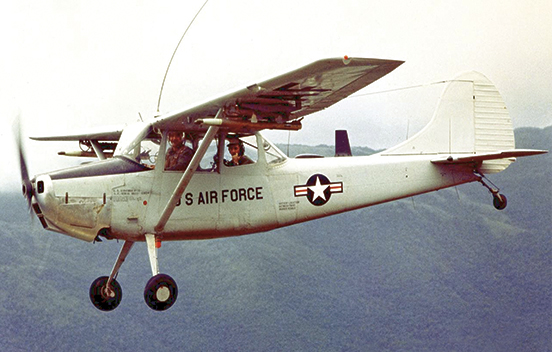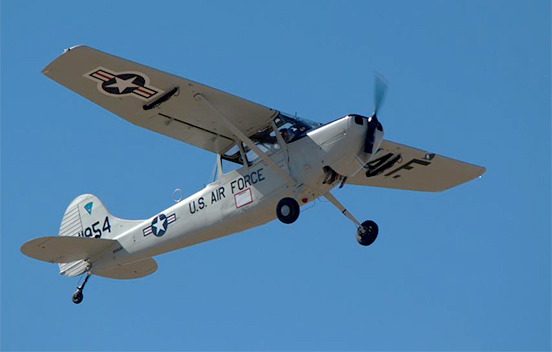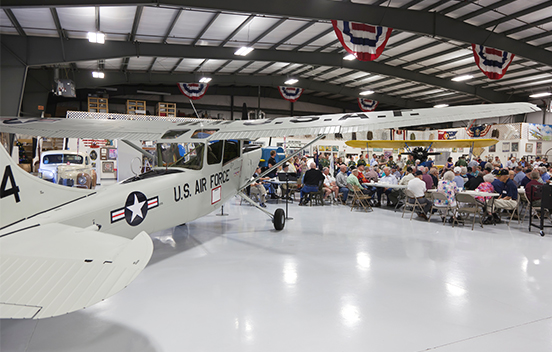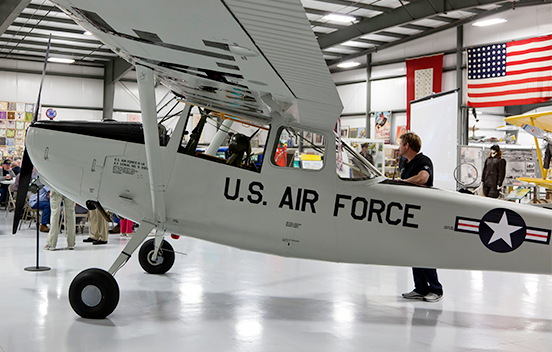Cessna





John & Sue Paul

Cessna L-19 Bird Dog
The Cessna L-19 (later O-1) Bird Dog was produced to fulfill the US Army’s need for an aircraft that could perform liaison and observation duties as well as adjust artillery fire. They requested it to be constructed of all metal, as the fabric-covered liaison aircraft used during World War II had short service lives. Production of the L-19 (a redesigned Cessna Model 170) began in 1950, and the aircraft were soon in use fighting their first war in Korea from 1950 through 1953.
The name “Bird Dog” was chosen because its role in battle was to find the enemy and orbit overhead until artillery or attack aircraft could be brought to bear on the target, in the manner of a bird dog used by game hunters. While flying low and close to the battlefield, the pilot would observe the exploding shells and adjust the fire coordinated via his radios.
The aircraft were also used in various utility roles such as medevac, front-line communications, and training. In 1962, the L-19 was redesignated the O-1, and entered its second war in Vietnam.
Our Bird Dog is painted in the markings of Chester “Soapy” Walborn who flew two combat tours in Vietnam and 996 sorties. He was awarded the Silver Star, nine Distinguished Flying Crosses, and Vietnam’s top five combat medals. Soapy retired with 8,400 hours of flying time, having been the commander of the Operations Group, the Support Group and the Vice Wing Commander from 1974-1976 at Mountain Home Air Force Base.
Cessna L-19 Bird Dog Specifications
- Built:
Original construction in 1950, Wichita, KS - Engine:
213 HP Continental O-470-11 flat six piston - Armament:
4x underwing pylons for mixed stores of smoke canisters and “Willie-Pete” white phosphorus marking rockets
- Length: 25’9″
- Height: 7’4″
- Wingspan: 36′
- Empty Weight: 1,614 lbs
- Max Weight: 2,400 lbs
- Range: 530 miles
- Service Ceiling: 20,300 ft
- Max Speed: 151 mph


 Opens in new window
Opens in new window  Opens in new window
Opens in new window  Opens in new window
Opens in new window